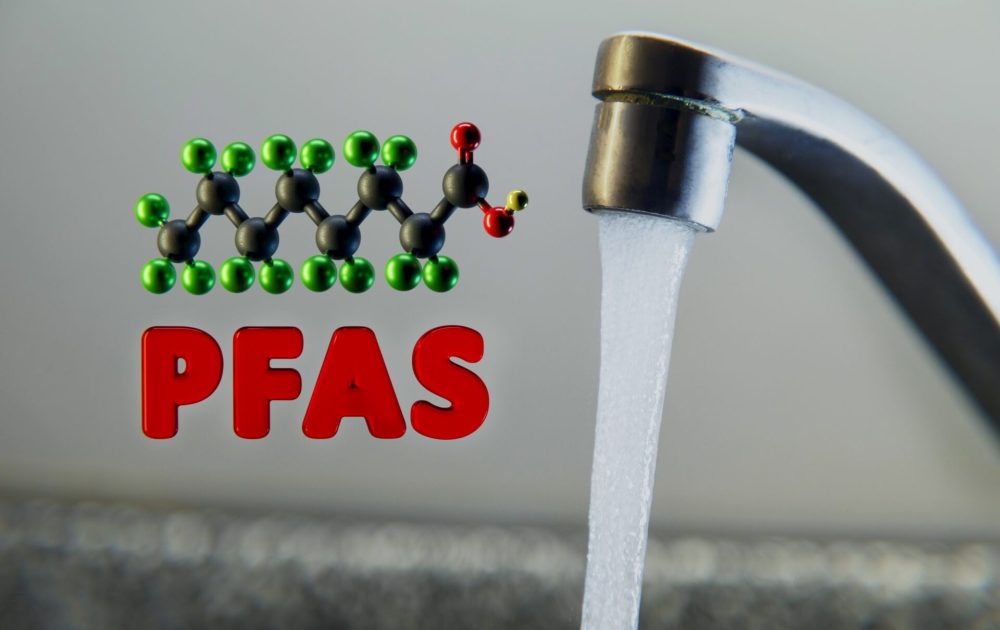Our test tells you which everyday chemicals you've recently come into contact with, and easy steps you can follow to reduce your exposure to them.
Are 'Forever chemicals' still forever?

Per- and polyfluoroalkyl substances (PFASs) are a group of 16,000 chemical substances with strong carbon-fluorine bonds that are extremely hard to break. They persist for hundreds of years or longer, so they are known as ‘Forever chemicals’. They are used for their water, non-stick, and stain resistance properties so many items in daily use that need these characteristics are likely to have used one of the PFAS chemicals. They can be detected in water, food packaging, toiletries, and hair products. PFAS can be detected in urine, blood, and breast milk. In the US 97% of people are estimated to have PFAS in their blood.
Are PFAS a concern for our health?
PFAS are widely considered to be an endocrine disrupting group of chemicals due of their ability to mimic the actions of the hormonal and endocrine system glands, especially at sensitive periods of development, and evidence about the effects of PFAS on our bodies points towards a serious health risk. Exposure to PFAS has been linked with increased risk of cancer, suppression of the immune system, hypertension, reductions in bone density, and kidney function.
PFAS chemicals cannot absorbed or broken down by the human body unaided, instead they attach to cell receptors and proteins where they can travel around the body, adversely affecting the functions of key organs. PFAS are generally excreted by the body in liver bile, but at the point of excretion they can also reattach to other cells and remain in the body, creating a body burden. Combined with ongoing exposure to PFAS, it’s probable that we retain more PFAS in our body as we get older.
Is it possible that PFAS bonds can be broken?
PFAS have chemical bonds that up until now were thought to be indestructible, but the race is on for scientists and engineers to break the “unbreakable bonds” of PFAS in new so-called ‘destruction technologies’ that could break the bonds currently thought to last forever. PFAS can be removed by mixing water and hot air under high pressure and heat, with trials underway in the US with promising results, but it’s an expensive process and not viable on a larger scale yet.
Residents in Illinois will be the amongst the first to drink water from a new water plant that will remove PFAS, and in Denmark residents of an Fanoe now enjoy PFAS-free water following the installation of a water treatment plant that uses ion exchange technology to remove PFAS from drinking water. It raises the problem of what to do with PFAS once it’s been removed to prevent it re-entering water courses.
Solutions to remove PFAS using biological methods are also progressing. Researchers at the University of Minesota are working on methods to genetically engineer microbial organisms that can partially absorb PFAS, although it’s known known how the chemical bonds are broken down yet. A clinical trial underway in Denmark will to find out if the human body can be supported in removing PFAS. People who live in an area with a high-risk of exposure to PFAS (proximity to a firefighting station using firefighting foam) are being treated with a drug called cholestyramine (used to lower cholesterol) and the results are promising – levels of PFAS detected in blood samples are 60% lower following treatment with the drug.
Is it possible to avoid PFAS in everyday products?
On a day-to-day level, PFAS substances are difficult to avoid completely because they bring convenient features to thousands of everyday products. Even with lifestyle changes it’s likely that most people will have some in their body from earlier exposures. But there are ways to reduce your everyday exposure to PFAS if you have concerns.
- Avoid food packaged with leak or greaseproof linings such as pizza boxes and ready meals. The linings typically rely on PFAS chemicals which can leach into food, especially when heated or warmed up in a microwave. To avoid, remove food from packaging as soon as possible and store in glass, and heat using glass or metal cookware.
- The level of PFAS in UK drinking water isn’t known because water authorities don’t routinely test for its presence, but tap water can be filtered to help reduce levels of PFAS and other potentially harmful substances such as microplastics. Filter water using a gravity water filter system – it will take longer to filter but results in a purer water and removes microplastics from your drinking water at the same time.
- Replace old non-stick pans, especially if they are scratched. Replace with metal cookware, but if you choose non-stick pans and cookware for convenience most are now manufactured using methods to prevent PFAS from escaping, unless used at extremely high temperatures for lengthy periods of time.
- Avoid wearing waterproof clothing close to the skin, and if you do for practicality, wear an organic cotton or wool layer against the skin. For ideas about children’s waterproof clothing read more in our post.
PFAS regulation
PFAS are gradually being phased out by most European countries, but the process is slow, and authorised substitutes may have similar health effects. Regulation in the UK is carried out by UK REACH but is thought to be lagging the EU progress.
Read more about PFAS in our insights guide.